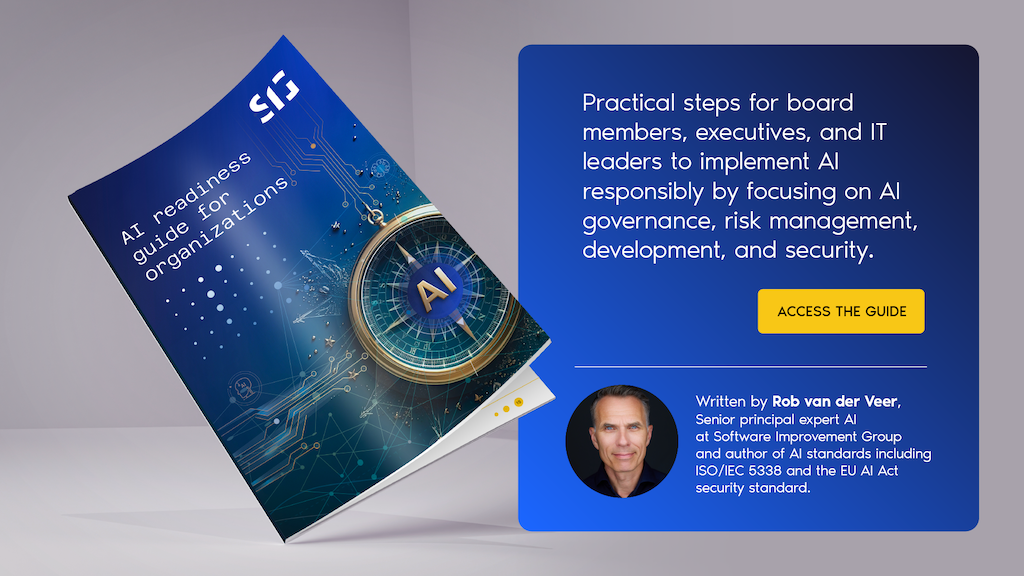AI explained for non-technical business leaders
In this article
Summary
This article aims to offer a comprehensive introduction to AI for executives and IT leaders, explaining foundational concepts like machine learning, deep learning, and generative AI.
It details how AI works, shares real-world examples of different subsets of AI, and goes into how an AI model is trained. The article also outlines AI’s limitations, including its inability to replicate human intuition or handle tasks requiring creativity and emotional intelligence.
Understanding AI
Artificial intelligence (AI) is often regarded as the next major frontier in technology, but understanding its fundamental workings can still be a challenge, especially for leaders looking to leverage AI in their organizations.
Today, approximately 77% of businesses are integrating AI models into their systems. This surge in AI adoption highlights its profound impact, akin to the revolutionary advent of electricity. However, with great opportunities come significant challenges and uncertainties.
For executives and IT leaders, understanding AI’s foundations is crucial for leveraging its potential while ensuring alignment with business goals. During our recent IT-leadership event, SCOPE2024, Rob van der Veer offered a straightforward explanation of AI concepts in layman’s terms.
What is AI
If we look at a textbook definition, the OECD defines AI broadly as systems that analyze input data to produce outputs, such as predictions, recommendations, decisions, or content.
Of course, this definition is quite broad, so there is a big chance this won’t help clarify what AI is. In addition, it also doesn’t help that people tend to label things as AI while they are specific subsets of AI, such as machine learning, deep learning, or generative AI.
So, let’s clarify what AI is once and for all.
At its core, AI refers to systems that analyze data inputs to generate outputs—whether that’s a recommendation, a prediction, or a decision. Unlike traditional software, which follows pre-defined rules, AI models learn to perform tasks autonomously.
What is machine learning?
Machine learning is a subset of artificial intelligence (AI) that focuses on enabling systems to learn from data and make decisions or predictions without being explicitly programmed for specific tasks. At its core, machine learning involves training algorithms on large datasets, allowing them to identify patterns and make informed guesses based on what they’ve learned.
For example, imagine an AI system being trained to differentiate between pictures of cats and dogs. The system is shown numerous labeled examples, and through pattern recognition, it learns to distinguish between the two. When presented with a new, unlabeled picture, the algorithm applies the patterns it has learned to make a prediction—whether the picture is of a cat or a dog.
Machine learning is essentially about finding regularities in data and applying those insights to new information. It’s the foundation of many modern AI systems and plays a crucial role in applications ranging from image recognition to recommendation engines.
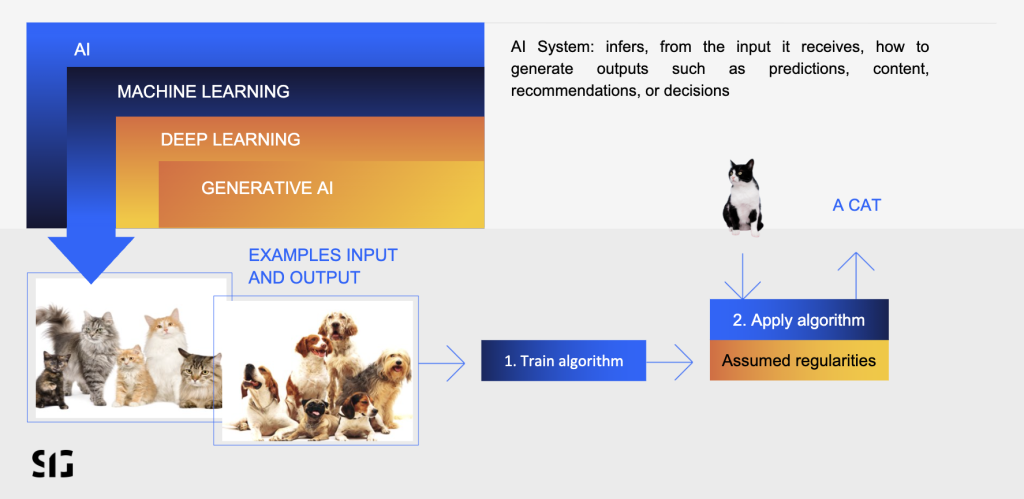
What is deep learning?
Deep learning is a specialized subset of machine learning that relies on artificial neural networks to process vast amounts of data. These neural networks are designed to mimic the structure and function of the human brain, with layers of interconnected nodes (or “neurons”) that work together to recognize patterns and learn from complex datasets.
In deep learning, data is passed through multiple layers of these networks, allowing the system to automatically extract higher-level features and insights from the raw input. For example, in image recognition, the first layer might detect basic features like edges, while deeper layers learn more abstract patterns, such as shapes or objects.
What is generative AI?
One of the key advancements in deep learning is its ability to power generative AI, which is responsible for innovations like ChatGPT and other large language models. These models are trained on vast amounts of text, allowing them to predict the next word in a sentence, generate coherent text, or even answer complex questions. While this task may sound simple, it requires the model to build a deep understanding of context, language, and the relationships between words.
In essence, deep learning enables AI systems to handle more complex tasks by using neural networks to learn from massive datasets, making it a driving force behind many of today’s AI advancements.
This type of AI is not limited to generating text. It also extends into coding—AI models are trained on large repositories of code and can help developers by generating new code snippets or even entire functions. However, it’s important to remember that AI’s outputs are only as good as the data it learns from. Poor-quality input can lead to flawed results, so AI systems need to be carefully managed and tested to ensure they are reliable
Application of artificial intelligence in business
After understanding what AI is and the key types that exist, it’s crucial for business leaders to see how these technologies are being applied across industries.
Machine learning and deep learning are two of the most influential subsets of AI, each with its own set of powerful use cases that are transforming how businesses operate. Below, we explore some of the ways these technologies are being used today.
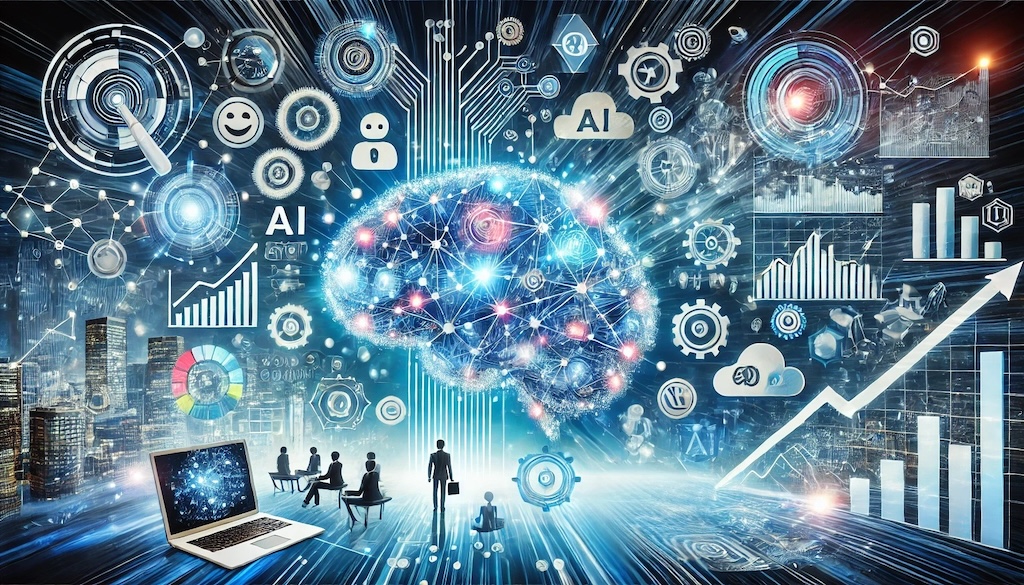
Machine learning examples
Customer behavior prediction
Machine learning helps businesses predict customer preferences and behaviors by analyzing data from previous interactions.
Example: Amazon uses machine learning to grow its e-commerce marketplace.
- By aggregating and analyzing purchasing data on products using machine learning, Amazon can more accurately forecast demand.
- In addition, Amazon utilizes browsing and purchasing data to provide tailored product recommendations and promotions.
Fraud detection
Many financial institutions rely on machine learning to detect fraudulent activities by spotting irregularities in transaction patterns.
Example: PayPal employs machine learning algorithms to flag unusual spending behavior that deviates from typical patterns, allowing them to prevent fraud in real time and enhance security measures for their customers.
Predictive maintenance
In manufacturing, machine learning predicts potential equipment failures by analyzing data from sensors embedded in machinery.
Example: Our partner, Siemens leverages machine learning in their industrial IoT solutions to monitor machinery performance, detecting signs of wear or failure before they cause costly downtime. This proactive approach reduces maintenance costs and keeps operations running smoothly.
Deep learning examples
Image and speech recognition
Deep learning powers facial recognition and voice assistants, transforming security and customer interactions.
Example: Apple utilizes deep learning in its Face ID technology for secure facial recognition on iPhones, while Google powers its virtual assistant, Google Assistant, with deep learning to respond accurately to voice commands, enhancing customer interactions through voice-based services.
Dynamic, personalized recommendations that adapt to changes in user behavior
While streaming services are famous for recommending new music or shows based on machine learning algorithms, there are deep learning algorithms that go even further.
Example: Spotify uses deep learning to (among many other things) model users’ slow and fast-moving interests, combining long-term preferences (like a consistent love for pop) with short-term trends (such as a sudden interest in classical music). By applying a variational autoencoder (VAE), Spotify’s system processes both general user habits and recent interactions to offer dynamic, personalized recommendations that adapt to changes in listening behavior.
Generative AI examples
Automated content creation
Generative AI models are often used to generate text.
Example: ChatGPT is trained to follow an instruction in a prompt, provide a detailed response, and interact in a conversational way. The possibilities are pretty much endless and fully dependent on the needs of the user.
Imagine you’re a student, you might input a large body of text in ChatGPT, like a research article, and request a summary. Because ChatGPT can condense the content into more manageable, key points, this will make it easier for you to understand complex material more quickly. Or imagine you’re a scriptwriter dealing with writer’s block. You could ask ChatGPT to generate dialogue between two characters in a science fiction setting, helping you figure out how to continue the story.
Visual content generation
Generative AI is transforming how companies produce visual assets, from product images to creative artwork, by generating high-quality images based on text descriptions.
Example: DALL-E is an AI system that can create realistic images and art from a description in natural language.
Users can input a text prompt describing the desired image, and DALL-E generates unique, relevant visuals in seconds, streamlining creative processes and reducing reliance on traditional design resources.
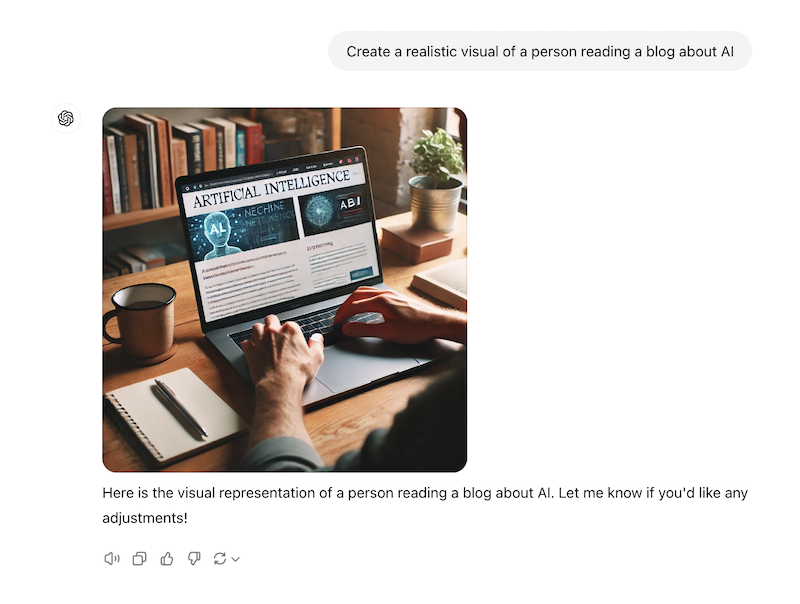
Code generation and automation
Generative AI can help software developers by automatically generating code, reducing the time spent on routine coding tasks.
Example: GitHub Copilot, assists developers by suggesting entire blocks of code based on the context of what they’re writing, speeding up development and reducing manual effort.
During SCOPE 2024, Dr. Lars Ruddigkeit from Microsoft, and a leading voice in AI, addressed the most pressing questions organizations have when considering integrating AI into their software engineering processes.
The core elements of AI
So, now that we understand what different subsets of AI are and how they are used, what is needed to make AI function properly?
Put simply –and without getting too technical– there are four main blocks that form the backbone of AI:
- Data
- Machine learning algorithms and tasks
- Computing power
- Human expertise
Compared to traditional software systems, both AI and software systems are built on code. However, where code is also the primary artifact of “traditional” software, for AI it’s the data it’s trained upon.
What is AI Training?
As we mentioned earlier, AI is programmed to learn to perform a task on its own. So, how is an AI model trained?

How does AI training work?
To summarize it without getting too technical, there are 2 distinct phases of training an AI model.
The data collection phase
AI models need vast, high-quality datasets to learn effectively. This data can take many forms, including text, images, video, and sensor data. In cases where real-world data is scarce or sensitive, synthetic data, which mimics real scenarios, can be used. The goal is to provide diverse data that represents all potential use cases the AI might encounter, ensuring robust performance across different conditions.
Model training and testing
During this phase, the collected data is fed into machine learning algorithms. There are different training methods—supervised learning, which relies on labeled data, and unsupervised learning, where the model identifies patterns on its own.
To ensure accuracy, models are tested and validated iteratively, using separate datasets for training, validation, and final testing. This continuous cycle of training and refinement is key to building reliable AI.
What AI can’t do
While AI excels in processing large datasets and automating tasks, it still faces key limitations. AI lacks human intuition and emotional intelligence, making it unable to replicate human creativity or social interactions. AI also struggles with general intelligence—solving new problems without prior data—and often fails to understand context deeply, limiting its effectiveness in decision-making. These challenges highlight the need for human oversight in areas requiring judgment, empathy, and adaptability.
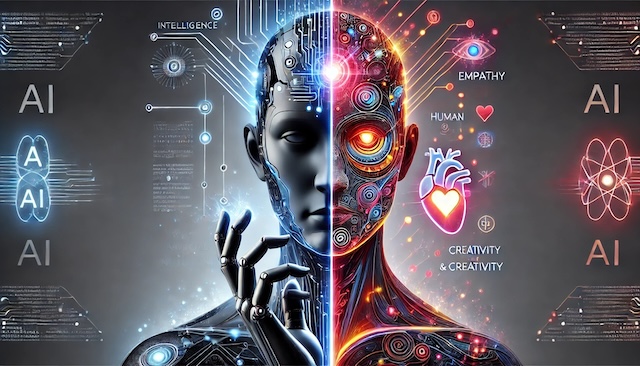
After learning about AI in business, you may wonder how to harness AI’s potential further. Our new AI readiness guide, authored by Rob van der Veer, a principal expert on AI standards like ISO/IEC 5338 and the EU AI Act, is here to help.
It outlines 19 actionable steps across board-level strategy, GRC, security, and IT development, ensuring executives can integrate AI effectively and responsibly. The guide will support you in understanding AI’s complexities while mitigating risks, enabling your organization to unlock AI’s full potential.
Ready to guide your organization through AI’s complexities? Download our AI readiness guide and take the next step toward responsible AI integration.

